Author: Matt Del Fiacco
One of the most discussed aspects of brewing, a variable many believe is of supreme importance when it comes to producing consistently good beer, is fermentation temperature. By precisely controlling the temperature of beer during the fermentation process, one is able to modulate the formation of both desirable and undesirable characteristics. Fermenting too cool is generally said to lead to a cleaner profile, which may or may not be preferred, but incites nowhere near the amount of fear and ire as the thought of fermenting too warm.
Unquestionably spurred by the incredible work of European beer researcher and blogger, Lars Marius Garshol, kveik yeast has grown massively in popularity over the last few years. A strain of Norwegian origin with a fascinating history, kveik yeast is in the S. Cerevesiae family, but unlike other ale strains, it has been shown to perform very well at temperatures as warm as 95°F/35°C, producing a pleasant profile with no perceptible off-flavors. Given all that’s required for adequate fermentation temperature control, it’s no wonder brewers find this unique yeast strain so appealing.
Numerous labs have released versions of kveik yeast to the public, many isolated from a strain that came from Sigmund Gjernes’ Voss farmstead. Last year, Imperial Yeast released A43 Loki as a seasonal strain, though due to its popularity, they recently announced it would be a year-round offering. Excited to put this heat tolerant fermenter through the paces, I designed an xBmt to see how it performs when fermented at different temperatures.
| PURPOSE |
To evaluate the differences between beers fermented with Imperial Yeast A43 Loki at either 64°F/18°C or 90°F/32°C.
| METHODS |
After chatting with Lars about this xBmt, I came to the conclusion I wouldn’t be able to stay true to a Norwegian Farmhouse Ale due to some process and ingredient (namely juniper) limitations. The recipe I designed was heavily inspired by some of the work Lars has done and simple enough to exemplify any impact of the variable.
Oh, I’m Staying In The Kitchen
Recipe Details
| Batch Size | Boil Time | IBU | SRM | Est. OG | Est. FG | ABV |
|---|---|---|---|---|---|---|
| 5 gal | 90 min | 24.6 IBUs | 2.9 SRM | 1.073 | 1.018 | 7.3 % |
| Actuals | 1.073 | 1.019 | 7.2 % | |||
Fermentables
| Name | Amount | % |
|---|---|---|
| Pilsner (2 Row) UK | 13.875 lbs | 100 |
Hops
| Name | Amount | Time | Use | Form | Alpha % |
|---|---|---|---|---|---|
| Magnum | 11 g | 90 min | First Wort | Pellet | 12 |
| Hersbrucker | 46 g | 15 min | Boil | Pellet | 2.2 |
Yeast
| Name | Lab | Attenuation | Temperature |
|---|---|---|---|
| Loki (A43) | Imperial Yeast | 79% | 68°F - 98°F |
Notes
| Water Profile: Ca 54 | Mg 11 | Na 25 | SO4 81 | Cl 65 |
Download
| Download this recipe's BeerXML file |
After collecting both sets of brewing water and adjusting each to my desire profile, I set the controllers to warm them to strike temperature.
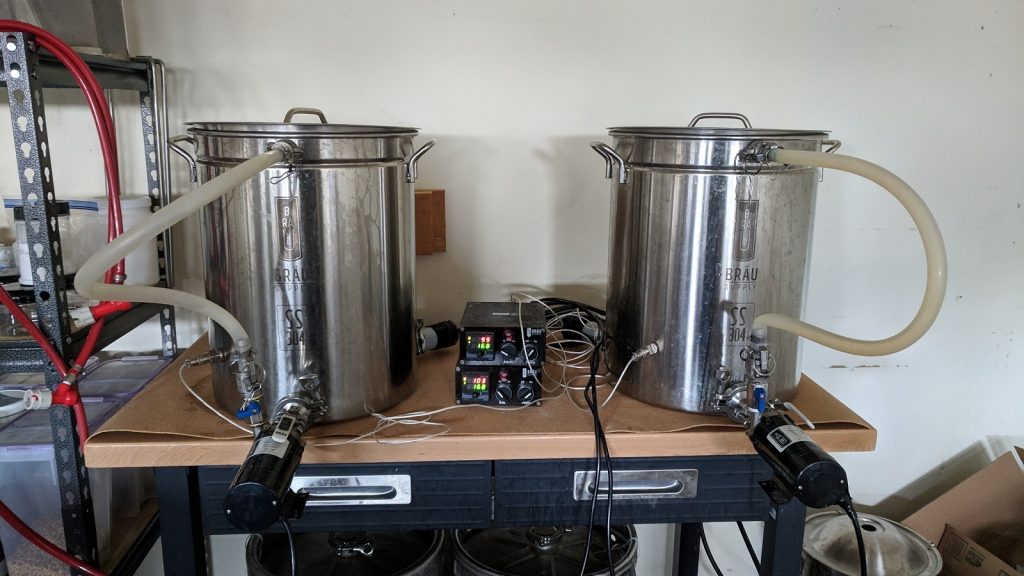
As the water was heating up, I weighed out and milled the grain for each 5 gallon/19 liter batch.
Once strike temperature was reached, I incorporated the grist into the water and checked to ensure both achieved the same target mash temperature.
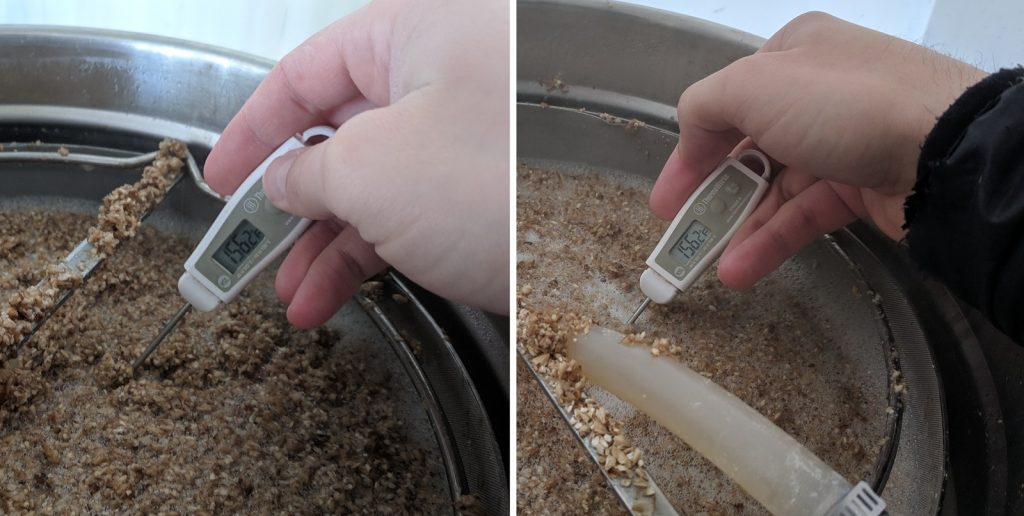
I took pH readings 15 minutes into each mash that showed both were identical, as expected.
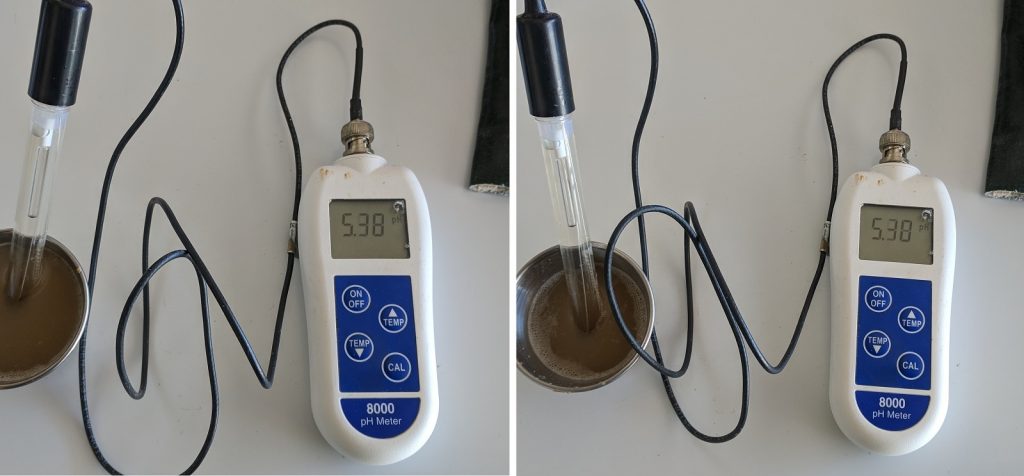
During the mash rests, I prepared the kettle hop additions.
When each mash was complete, I removed the grains then boiled the worts for 60 minutes before chilling both with my counterflow chiller during transfer to fermentation vessels.
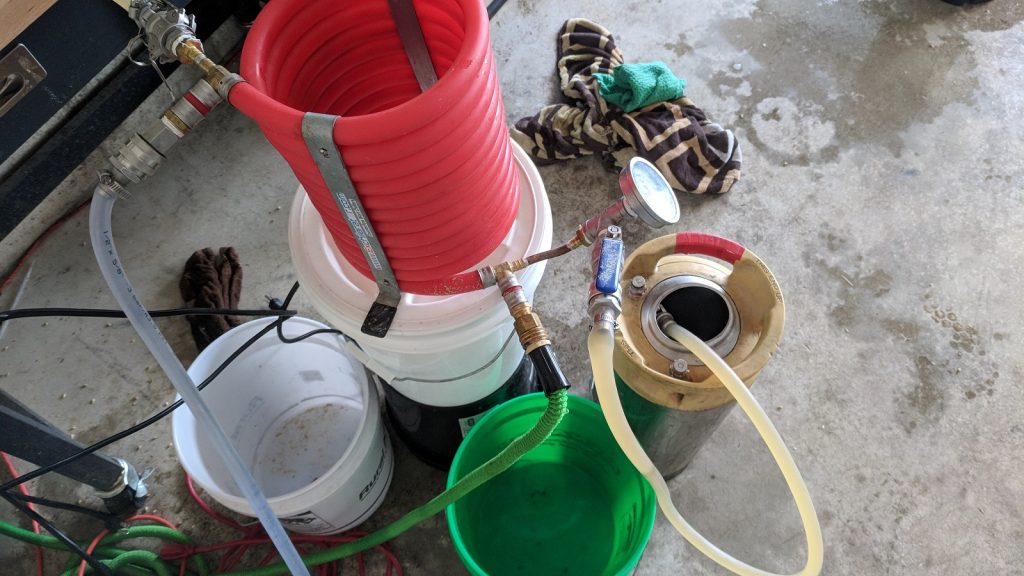
Hydrometer measurements revealed both worts were at the same target OG.
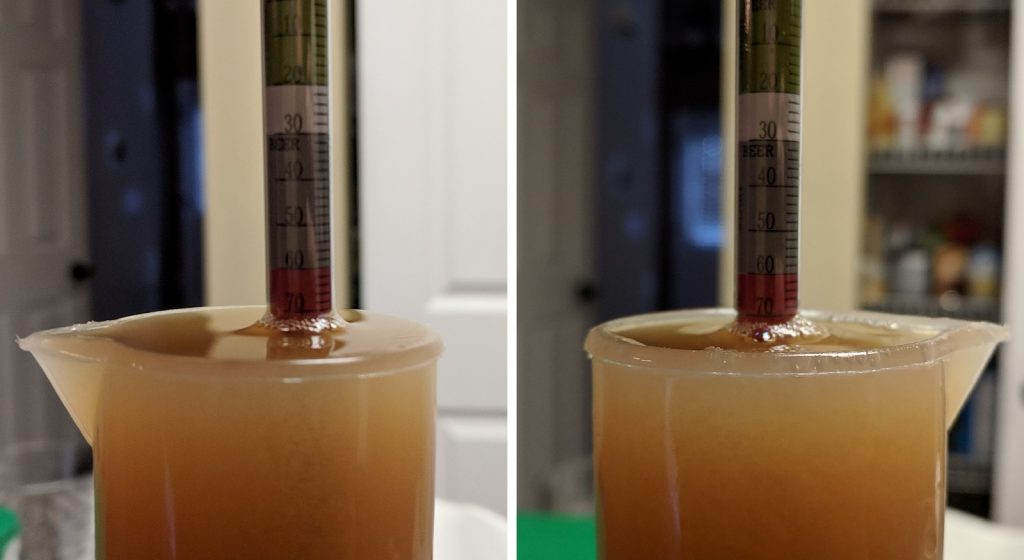
Equal volumes of wort were transferred to fermentation kegs that were placed in separate fermentation chambers, one controlled to 64°F/18°C and the other set to maintain a steady 90°F/32°C.
At this point, I made a couple starters of Imperial Yeast A43 Loki using leftover wort.
The worts were left to sit in their respective chambers overnight so that each would stabilize at the target fermentation temperature. I returned the following morning, approximately 14 hours later, and pitched the yeast starters.
Curious to see how things were progressing, I took hydrometer measurements after just 2 days of fermentation and found both beers were chugging along at a similar pace. After another week, I took a second set of hydrometer measurements showing that each beer had reached a final gravity of about 1.018.
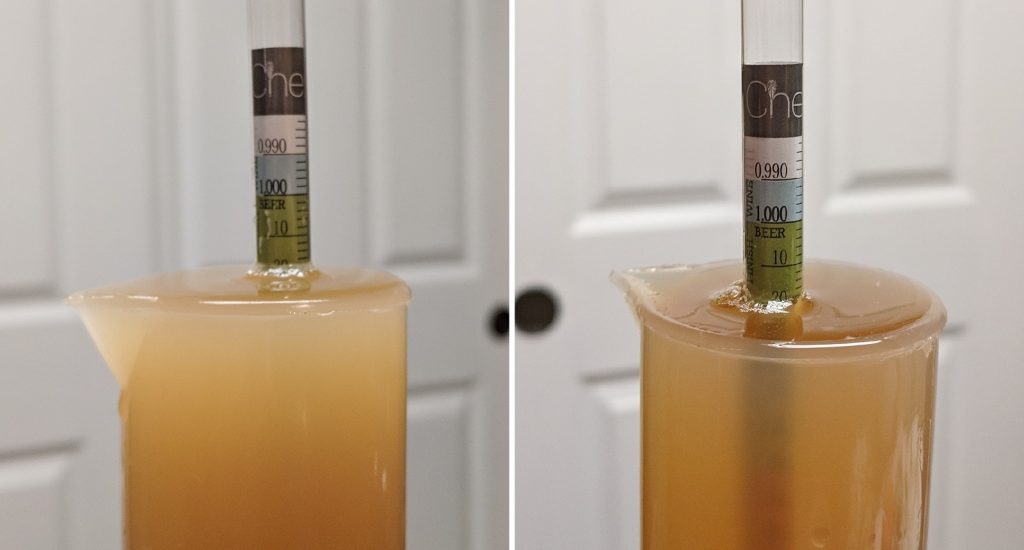
At this point, I pressure transferred the beers to CO2 purged serving kegs and put them in my keezer on gas to force carbonate. After another week of conditioning, the beers were ready to serve to tasters.
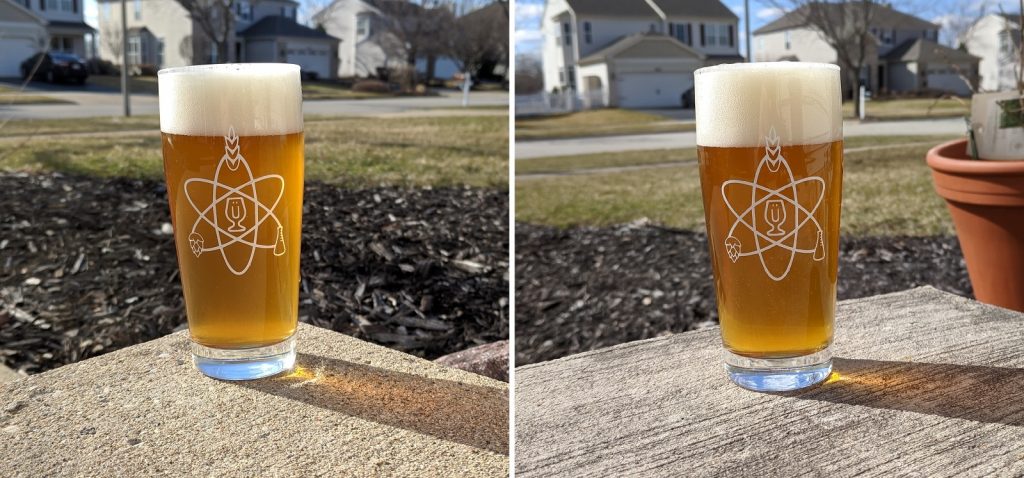
| RESULTS |
A total of 25 people of varying levels of experience participated in this xBmt. Each participant was served 1 sample of the cool fermented beer and 2 samples of the warm fermented beer in different colored opaque cups then asked to identify the unique sample. While 13 tasters (p<0.05) would have had to accurately identify the unique sample in order to reach statistical significance, 15 (p=0.006) did, indicating participants in this xBmt were able to reliably distinguish a lightly hopped pale colored beer fermented with Imperial Yeast A43 Loki at 64°F/18°C from one fermented at 90°F/32°C.
The 15 participants who made the accurate selection on the triangle test were instructed to complete a brief preference survey comparing only the beers that were different. A total of 9 tasters reported preferring the cool fermented beer, 4 liked the warm fermented beer more, 1 person had no preference despite perceiving a difference, and 1 person felt there was no difference.
My Impressions: I attempted 4 semi-blind triangle tests and chose the odd-beer-out every time, which left me confident they were noticeably different. While the beers shared a rich maltiness and moderate noble hop character, I perceived the warm fermented version as having a more expressive fruity yeast character compared to the batch fermented cool. I was startled by how much I enjoyed both of these beers, and while the were different to me, I can’t claim to have preferred one over the other. And there’s no way I’d guess one of these beers fermented 26°F/14°C warmer than the other. On the record, I’m a kveik convert!
| DISCUSSION |
Fermentation temperature is one of the most focused on variables in brewing, as it’s believed to be a major player in flavor development and overall beer quality. The mere idea of fermenting a beer of north of about 70°F/21°C is enough to make most brewers shudder, yet many have been going even warmer with kveik strains with positive results. Interestingly, tasters in this xBmt were able to tell apart versions of the same beer fermented with at either 64°F/18°C or 90°F/32°C, indicating temperature plays a role in overall character when fermenting with Imperial Yeast A43 Loki.
However, a difference implies nothing about quality. With rare exception, most other yeasts would be expected to produce an undrinkable mess if fermented at 90°F/32°C. Not only was the warm fermented beer in this xBmt not bad, but it was actually quite delicious. While I perceived it as possessing a slightly stronger ester profile than the cool fermented version, this character was by no means overblown. What these results suggest to me is that Loki may be an ideal strain for those who may not have the ability to precisely control fermentation temperature, as well as brewer interested in coaxing various characteristics out of a single strain.
Thanks to numerous xBmts, I’m admittedly not nearly as rigid when it comes to fermentation temperature as I used to be, at least within specific contexts. However, my skepticism was certainly in place when I set my controller to 90°F/32°C for this xBmt, confident not only that tasters would be able to tell it apart from the cool fermented version, but that it likely wouldn’t taste very good. While my hunch about there being a difference was accurate, I’m happy to report I was dead-wrong about the beer’s drinkability– I loved it and look forward to playing with Loki much more in the future!
If you have any thoughts about this xBmt, please do not hesitate to share in the comments section below!
Support Brülosophy In Style!
All designs are available in various colors and sizes on Amazon!
Follow Brülosophy on:
FACEBOOK | TWITTER | INSTAGRAM
If you enjoy this stuff and feel compelled to support Brulosophy.com, please check out the Support page for details on how you can very easily do so. Thanks!

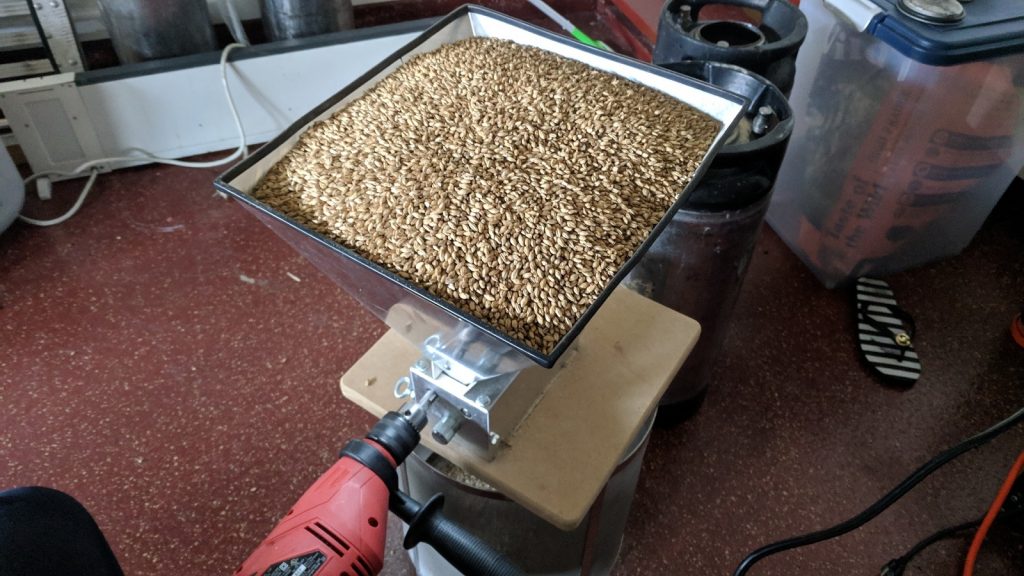
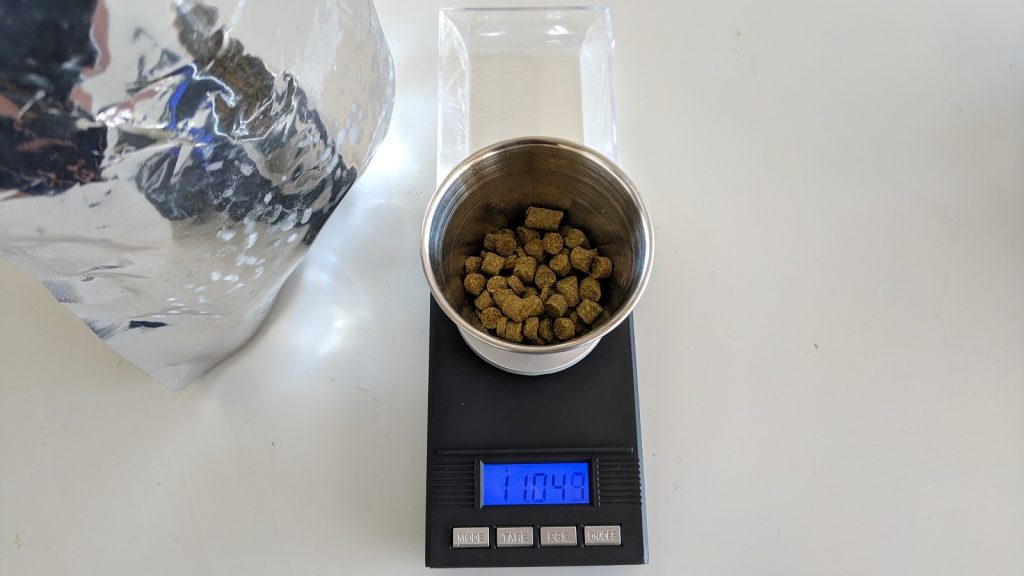
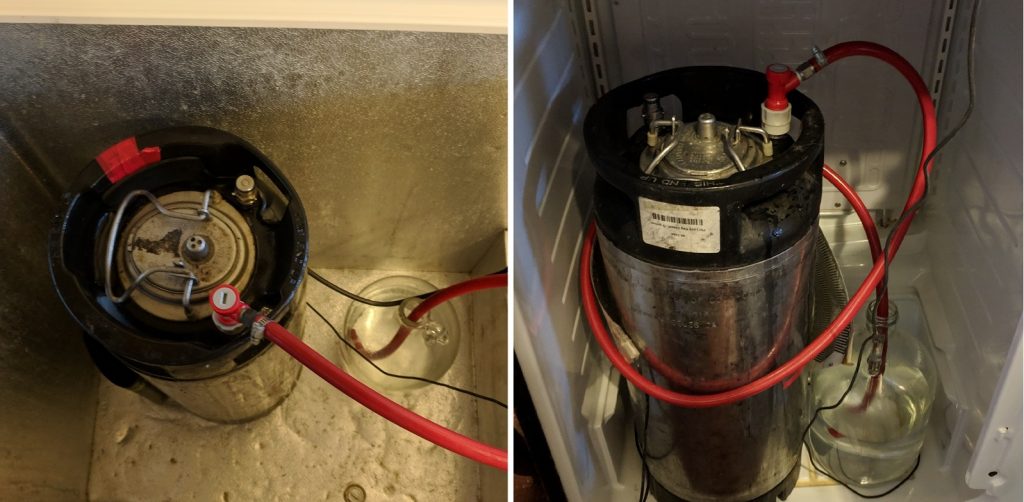
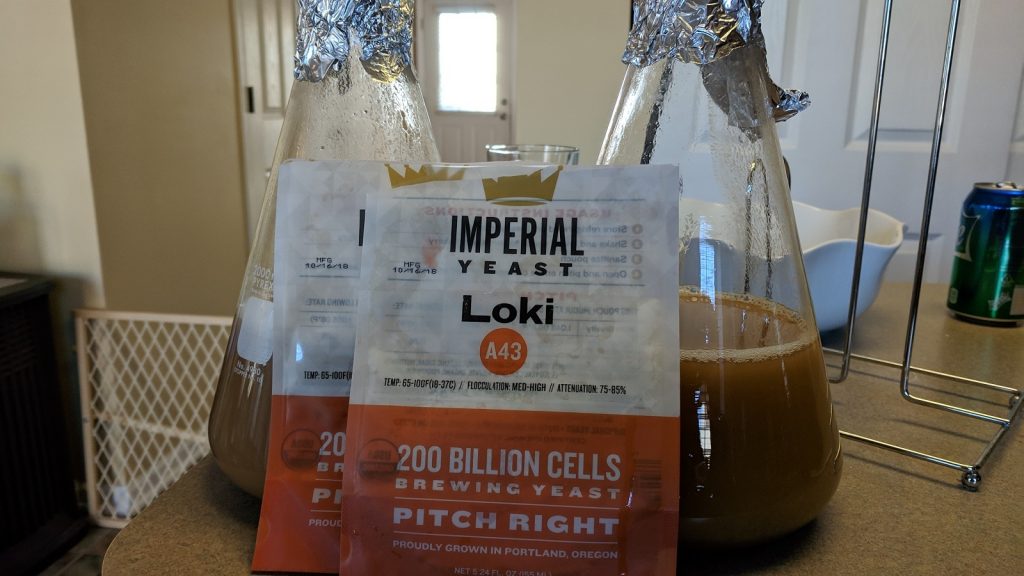
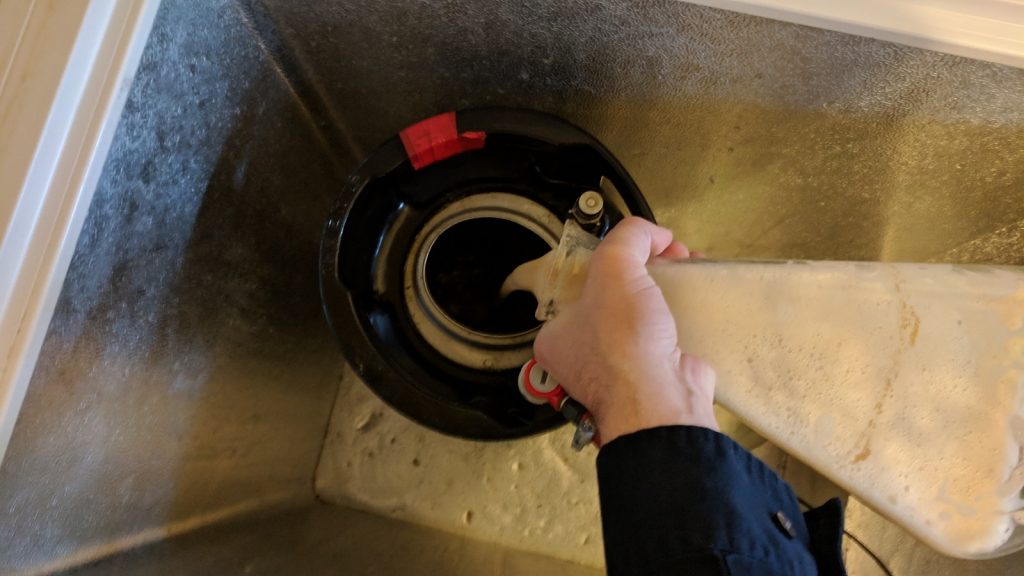










53 thoughts on “exBEERiment | Fermentation Temperature: Imperial Yeast A43 Loki (Kveik) In A Farmhouse Ale”
It’s kveik, not kviek…
And fixed, thanks for catching that.
Thanks for the article.
I guess:
“I took a second set of hydrometer measurements showing WHATEVER THEY SHOWED!”
and:
“After HOWEVER MANY DAYS of conditioning, the beers were ready to serve to tasters.”
is missing some information 🙂
Oh man, thanks for catching those. I updated the article just now.
Don’t you mean “kveik”?
I absolutely do, thank you!
Did your fermenter actively keep the fermentation warm enough?
It was a struggle, but yeah it did! It helps that it was in a much smaller chamber than my normal chest freezer.
You don’t need to make a starter with the kveik strains…underpitching helps stress the yeast which brings out more of their awesome esters. Last batch I brewed I only pitched 2 tbsp of slurry in 12 gallons and it cleaned through the wort in about 3 days.
Definitely, I’d read that as well! I ended up doing one just due to one of the articles I read over on Larsblog, which was about the re-hydration of the yeast from a yeast ring. Not a like scenario, due to the fact my yeast was healthy and hydrated. I definitely plan on playing with kveik more, pitching rates are on that list.
I really INSERT EMOTION! this article.
As do I, fellow human.
Thanks for the catch! I just updated the article.
What other yeast strains would be in comparison to Kviek? Probably another good experiment for down the road. Thanks and Cheers.
Thank you for sharing the results of the experiment. Did the warm ferment batch produced any fused alcohol with kveik yeast fermented at 90 F?
None that I noticed! Each of these beers had a bit of noticeable alcohol to them, but the warm ferment beer was not noticeably different in that regard, at least not to my palate.
Did you notice anything particular about the mouthfeel of the beers? I’ve listened to another podcast that has been playing with these yeast strains quite a bit. I believe they have all commented on the mouthfeel of the beers being different in a good way. I might be confusing the kveik with the new Lithuanian strain though. I listen to way too many podcasts, #trafficproblems.
Possibly MTF? So each of these beers had a lot of mouthfeel, but I’ll admit that I had attributed that in my head to the high mash temperature and finishing gravity. Would be great to try this again with a lower mash temp.
What was the attenuation? It would be interesting to do a low mash temp vs high and see if it hits the same attenuation or not. I wonder if different grains/malts like wheat or rye would bring out different characteristics in the yeast (i think some have reported differences with saison yeast and all else being equal)
74% attenuation on each, and I have the same curiosities!
Did you get fused alcohol when fermented the beer at 90 F? Thanks for the article.
I did not. Both beers had a slight alcoholic note to them, but that wasn’t really what set the beers apart for me.
I think they mean “fusel alcohol”. In other words are you going to get a crazy hangover from fermenting at a high temp due to the production of amyl alcohol? Also, did you pick up any phenolic spiciness?
Ah! Awesome thank you dude. Answer is still no, no hangover issues! And no phenolic character to speak of.
I realize that these were fermented in kegs but did you notice a difference in the kraeusen residue when cleaning the kegs?
That’s a great question, and honestly I just wan’t paying attention to that when I was cleaning. I’ll need to do that in the next go round, sorry about that.
Cool. Thanks again for all your work. This website is invaluable.
What were the gravities after 2 days? It would be interesting to see tasting notes on the beer fermented at high temps at 3 days verse 7. Could be a future experiment? Thanks!
About 1.030, if I recall correctly! So chewing down quick from the original gravity.
Late to the convo, Matt. I bought this on my homebrew shop’s recommendation as my basement climbs into the 70s in the summer. Brewed a pale ale that I pitched at 67º, 1.060. The next morning, it was cooking … highly active. Went back a few hours later and it had blown out the bung (& using blow-off tube, not an airlock). Temp up to 72.5º. The next day, still cooking, 75.5º. End of day 3, temp down to 73.2º, activity slowing. So it seems on track. Took a sample/reading but the reading changed after sitting out for an hour. The first, at 74º, was 1.031 – right in line with what you recalled. But the second reading, at 76.2º, calculates to 1.023. I’m sure I read it right. Did the increased temp & the still-active yeast affect the reading? The good news: It tastes great! Thanks.
I just did this same experiment to present to our homebrew club with virtually the same results. Fermented half at 65 and half at 95 degrees. I did underpitch the 95 degree batch though.
That’s awesome dude! What were people’s experience with those beers?
So I get that different temps didn’t yield off flavors however they were still controlled and it was interesting to read the results.
I’d be interested in an xBmt using kveik yeast with no temp control at all ie just sit the fermenter on the kitchen bench or any room that’s exposed to some level of temp swings to see what happens. That would more closely mirror what happens for those without temp control. 22c during the day, dropping to 16c at night for example. Thoughts?
Someone on the reddit thread brought this up as well, and I think its an excellent idea.
I brewed two batches last year with Omega Hot Head yeast, first in April, in the basement, ambient was 68 degrees. Harvested the yeast and then the second batch was in July, fermented in the garage with fluctuating temps from 75 – 95. I saved some bottles from the first batch for a comparison. I couldn’t taste a difference, that is the yeast I will use this summer in the garage.
Does Imperial offer other Kveik strains? I know Omega Yeast offers 3 different strains for Home brewers. Each seems to bring its own distinction to the beer.
At this time no, they only offer Loki. Omega is a fantastic company, and Bootleg Biology is offering some great ones as well.
I’m a fan of these, I’ve usually used Omega though (Located in Chicago!). I like their Hornindal Kveik quite a bit. I’ve run similar experiment with Voss Kveik, though at 63 & 95F. I also preferred the warm beer, the cooler fermented beer seemed to have a bit sharper, herbal taste.
I’ve noticed kveik beers tend to stay a little hazy, have you tried gelatin or other fining methods with them?
Chicago represent! Though I’m not in Chicago proper, so I can’t have too much of a claim. I’ve had Malort, that’s the bar for being a Chicago-an right?
So I purposefully did not use any of my usual finings for this batch, and I’ve also noticed the beer is a bit hazy, which aligns with some other anecdotal reports I’ve seen. I think the warm ferment beer was a bit clearer, but both were hazier than I wanted.
“fear and ire”–I don’t think that’s really it, it’s just wanting to make the best beer possible, in light of you may only brew a couple times a year. I’ve had a pineapple beer and a banana beer, and while they were (sorta) drinkable, I’m not anxious to replicate that, with $30 or so worth of ingredients, not to mention the time involved.
This is Sigmund Gjernes’s strain, Voss kveik. They are available via TYB and Omega as well.
Kveik goes well beyond 35℃. The recommended Voss Kveik pitch temperature is 39℃ (102℉), and the highest tolerable temp is 42℃ (107.6℉). Just made a no-boil, entirely dry hopped kNEIPA with Voss at 39℃ (102℉), and it came out very clean and fruity after the initial hop burn faded out. Mash to keg in 6 days.
Kveik is dynamite. Brewed a wort yesterday, got 42 liters of 1.103. It blew the krausen out of my airlock in a 70 liter fermenting vessel after 12 hours. I used two tablespoons of dried kveik, pitched dry direct in wort, from my freezer.
Does anyone know what “family” Loki is from? Voss, Hornindal,etc.
Does anyone know what “family” Imperial’s Loki is? Voss, Hornindal, etc.?
Voss
I did a similar experiment, but between Loki and Safale K97 on a split Blonde Biere de Garde. I fermented the k97 at ~15c, the Loki at ~21c with a healthy pitch. Very little difference in the finished beers although I do think I’d be able to tell in a blindfold test; there’s definintely a hint of the characteristic spice/earthy orangey esters with the Loki, but just a hint. Both finished at about 1.011, with the Loki being done within a week (a lot faster than the k97). I’d happily brew a hell of a lot of beer styles with it – already done an underpitched, warm fermented US pale hopped with Amarillo, Mandarina Bavaria and Motueka – made a difference; Pretty much a standard US pale, but with a very slight spicy tartness, in a good way (a mate suggested there was a hint of rye, which I actually get). The earthy orange peel came through a lot, possibly even better as the hops started to fade after a few months. Got a beer fermenting now with Omega’s Hothead (Stranda I think), underpitched and warm fermented. I genuinely think Kveiks are going to be game changers.
Has anybody tried these strains at colder temps? Like I’d-50’s?
Hi, great experiment, congrats! However, I have a question about pitch temperature… According to Lars notes, voss kveik pitch temperature is 39℃ (102℉) and in your experiment you left the beers stabilize at the target fermentation temperature before pitch the yeast starters. You think that can be any effect on final beers? What temperature did you keep the starters? Perhaps the temperature of the starter made up for this difference for you… And one more question if I may, I’ve been using omega voss and I’ve noticed an increase in bitterness perception in the final beer, have you ever heard anything about it?
>You think that can be any effect on final beers?
I have no idea, potentially? Pitch temp is an interesting variable for Kviek, one I intend to try out.
>What temperature did you keep the starters?
Starters were made in my basement, which is about 64F.
>Have you ever heard anything about it?
I have not unfortunately, not a lot of experience with the Omega Voss which I believe is also an isolate, though I have no idea if it is the same isolate as the Loki. I believe true Voss is a culture of three strains? Really interesting you’re picking up increase bitterness, I wonder if that would hold true for other Voss strains or other Kvieks in general.
So I’m also curious to understand the effects of pitch temperature on kveik, since there was a very big concern for Lars to record this variable for each type of kveik (http://www.garshol.priv.no/download/farmhouse/kveik.html). Even more than with the fermentation temp.
With 64F you kept starters in lowest range of the yeast (Imperial recomends 65-100F / 18-38C). For comparison, Omega’s recommended temp for voss is 72–98F (22–37C). A little higher than Imperial at the lower range.
Perhaps an interesting experiment to better understand the effect of pitch temperature is to skip the starter step and inoculate the dry yeast direct into the beers at their distinct temperatures (64F/18C and 90F/32C as in your attempt).
Regarding the increase in bitterness, I know that both omega and imperial are an isolate strain of the original norwegians voss. If they are the same strain I dont know, but the original voss are compose for 3 strains, according Lars, and no increase bitterness have been perceve in your notes. But in my last two beers with voss I note that. Because of that, I’m thinking of redoing these last two recipes by putting a little less hops to compare.
I don’t think all kveiks promote this increase in bitterness perception, but I know there are some that do. The kveik know as Ebbegarden was described by Lars as: “Tends to emphasize the bitterness of boiled hops, so be careful to either not boil the hops, or to reduce the IBU”. A friend of mine has a sample of this kveik and we intend to try a no IBU recipe for this evaluation. This must be a very interesting experiment too.
Bitterness perception- Kveiks have been known to produce lower pH in beers than standard yeasts. And I believe lower pH increases bitterness perception. Sounds like you have a fine-tuned pallet. Escarpment Labs did some studies on the pH thing. I believe kveik has a greater appetite for FAN than typical beer yeasts. Supplementing with FAN may minimize the pH drop. Alternatively, low-flocculation could increase bitterness. I believe yeast attracts bitter compounds. I’m not sure if kveik is low-floc. In my experience it seems to make a robust/dense/chunky sediment layer.
Bingo. I have done four commercial batches with Lallemand’s Voss and all four went to 4.0 PH during fermentation. The first to were at 5.2 into the fermenter and the second two were 5.5. It seems as though the yeast buffers to right about 4. I have taken to adding some calcium carbonate to bring the ph back up to about 4.4ish.
Great article, thanks!
Many Kveik beers look like cloudy mango juice but yours doesn’t at all. Perfect colour with a nice level of clarity. Did you cold crash or anything to get that clarity?
Regards
Phillip from Germany